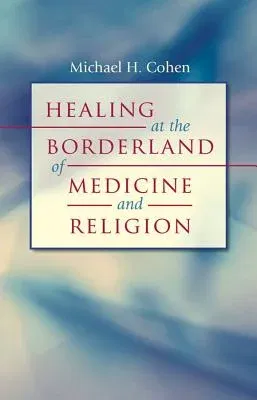One of the transformations facing health care in the twenty-first
century is the safe, effective, and appropriate integration of
conventional, or biomedical, care with complementary and alternative
medical (CAM) therapies, such as acupuncture, chiropractic, massage
therapy, herbal medicine, and spiritual healing. In Healing at the
Borderland of Medicine and Religion, Michael H. Cohen discusses the
need for establishing rules and standards to facilitate appropriate
integration of conventional and CAM therapies.
The kind of integrated health care many patients seek dwells in a
borderland between the physical and the spiritual, between the
quantifiable and the immeasurable, Cohen observes. But the present
environment fails to present clear rules for clinicians regarding which
therapies to recommend, accept, or discourage, and how to discuss
patient requests regarding inclusion of such therapies. Focusing on the
social, intellectual, and spiritual dimensions of integrative care and
grounding his analysis in the attendant legal, regulatory, and
institutional changes, Cohen provides a multidisciplinary examination of
the shift to a more fluid, pluralistic health care environment.
One of the transformations facing health care in the twenty-first
century is the safe, effective, and appropriate integration of
conventional (or biomedical) care with complementary and alternative
medical (CAM) therapies, such as acupuncture, chiropractic, massage
therapy, herbal medicine, and spiritual healing. Michael H. Cohen
discusses the need for establishing rules and standards to facilitate
appropriate integration of conventional and CAM therapies. The kind of
integrated health care many patients seek dwells in a borderland between
the physical and the spiritual. But the present environment fails to
present clear rules for clinicians regarding which therapies to
recommend, accept, or discourage, and how to discuss patient requests
regarding inclusion of such therapies. Focusing on the social,
intellectual, and spiritual dimensions of integrative care and grounding
his analysis in the attendant legal, regulatory, and institutional
changes, Cohen provides a multidisciplinary examination of the shift to
a more fluid, pluralistic health care environment.


